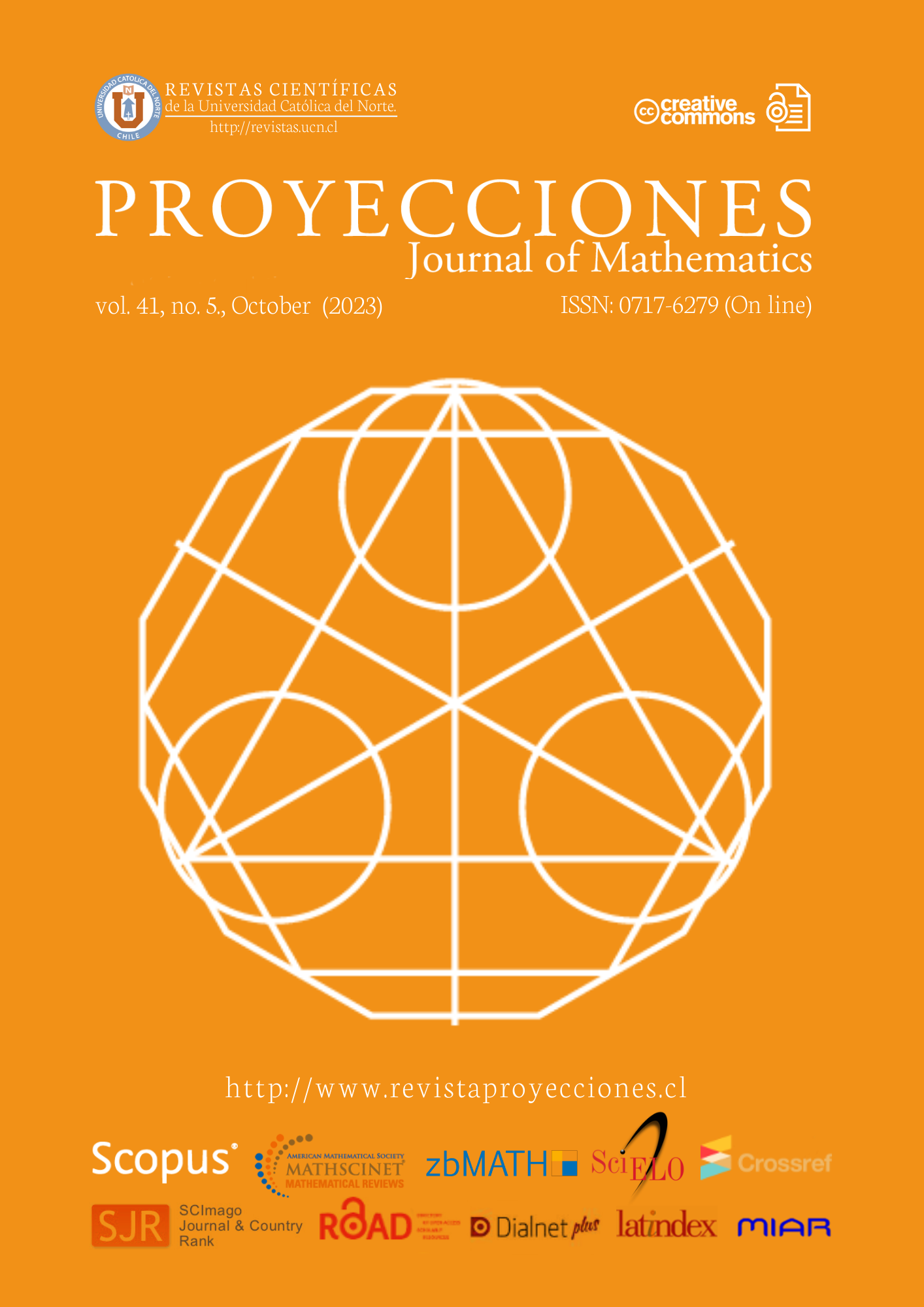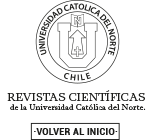On weakly (m, n)−closed δ−primary ideals of commutative rings
DOI:
https://doi.org/10.22199/issn.0717-6279-5509Keywords:
δ−primary ideal, weakly 2−absorbing ideal, weakly n−absorbing idealAbstract
Let R be a commutative ring with 1 ̸= 0. In this article, we introduce the concept of weakly (m, n)−closed δ−primary ideals of R and explore its basic properties. We show that a proper ideal I of R is a weakly (m, n)−closed γ ◦ δ−primary ideal of R if and only if I is an (m, n)−closed γ ◦ δ−primary ideal of R, where δ and γ are expansions ideals of R with δ(0) is an (m, n)−closed γ−primary ideal of R. Furthermore, we provide examples to demonstrate the validity and applicability of our results.
References
D. D. Anderson and M. Bataineh, “Generalizations of prime ideals”, Communications in Algebra, vol. 36, no. 2, pp. 686-696, 2008. https://doi.org/10.1080/00927870701724177
D. D. Anderson and E. Smith, “Weakly prime ideals”, Houston Journal of Mathematics, vol. 29, no. 4, pp. 831-840, 2003.
D. F. Anderson and A. Badawi, “On (m, n)−closed ideals of commutative rings”, Journal of Algebra and Its Applications, vol. 16, no. 1, 1750013, 21 pp., 2017. https://doi.org/10.1142/S021949881750013X
D. F. Anderson and A. Badawi, “On n−absorbing ideals of commutative rings”, Communications in Algebra, vol. 39, no. 5, pp. 1646-1672, 2011. https://doi.org/10.1080/00927871003738998
D. F. Anderson and A. Badawi and B. Fahid, “Weakly (m, n)−closed ideals and (m, n)−Von Neumann Regular Rings”, Journal of the Korean Mathematical Society, vol. 55, no. 5, pp. 1031-1043, 2018. https://doi.org/10.4134/JKMS.j170342
A. Badawi, “On 2−absorbing ideals of commutative rings”, Bulletin of the Australian Mathematical Society, vol. 75, no. 3, pp. 417-429, 2007. https://doi.org/10.1017/S0004972700039344
A. Badawi, M. Issoual and N. Mahdou, “On n−absorbing ideals and (m, n)−closed ideals in trivial ring extensions of commutative rings”, Journal of Algebra and Its Applications, vol. 18, no. 7, 1950123, pp. 19, 2019. https://doi.org/10.1142/S0219498819501238
A. Badawi, Ü. Tekir and E. Yetkin Çelikel, “On 2−absorbing primary ideals in commutative rings”, Bulletin of the Korean Mathematical Society, vol. 51, no.4, pp. 1163-1173, 2014.
A. Badawi, Ü. Tekir and E. Yetkin Çelikel, “On weakly 2−absorbing primary ideals of commutative rings”, Journal of the Korean Mathematical Society, vol. 52, no. 1, pp. 97-111, 2015. https://doi.org/10.4134/JKMS.2015.52.1.097
S. Ebrahimi Atani, “On weakly primary ideals”, Georgian Mathematical Journal, vol. 12, no. 3, pp. 423-429, 2005. https://doi.org/10.1515/GMJ.2005.423
B. Fahid and D. Zhao, “2−absorbing δ−primary ideals in commutative rings”, Kyungpook Mathematical Journal, vol. 57, no. 2, pp. 193-198, 2017. https://doi.org/10.5666/KMJ.2017.57.2.193
M. Hamoda, “On (m, n)−closed δ−primary ideals of commutative rings”, accepted in Palestine Journal of Mathematics, 2023.
M. Hamoda and A. Ashour, “On graded n−absorbing submodules”, Le Matematiche, vol. 70, no. 2, pp. 243-254, 2015. https://doi.org/10.4418/2015.70.2.16
J. A. Huckaba, Commutative Rings with Zero Divisors. Monographs and textbooks in pure and applied mathematics, vol. 117. New York: Marcel Dekker, 1988.
H. Mostafanasab, F. Soheilnia and A. Yousefian Darani, “On weakly n−absorbing ideals of commutative rings”, Analele Stiintifice ale Universitatii Ovidius Cnstanta Seria Matematica, vol. 3, no. 2, 2016. https://doi.org/10.2478/auom-2021-0024
G. Ulucak, Ü. Tekir and S. Koç, “On n−absorbing δ−primary ideals”, Turkish Journal of Mathematics, vol. 42, no. 4, pp. 1833-1844, 2018. https://doi.org/10.3906/mat-1710-3
A. Yousefian Darani and F. Soheilnia, “2−absorbing and weakly 2−absorbing submodules”, Thai Journal of Mathematics, vol. 9, no. 3, pp. 577-584, 2011.
D. Zhao, “δ−primary ideals of commutative rings”, Kyungpook Mathematical Journal, vol. 41, no. 1, pp. 17-22, 2001.
Published
How to Cite
Issue
Section
Copyright (c) 2023 Mohammad Hamoda, Mohammed Issoual

This work is licensed under a Creative Commons Attribution 4.0 International License.
-
Attribution — You must give appropriate credit, provide a link to the license, and indicate if changes were made. You may do so in any reasonable manner, but not in any way that suggests the licensor endorses you or your use.
- No additional restrictions — You may not apply legal terms or technological measures that legally restrict others from doing anything the license permits.












